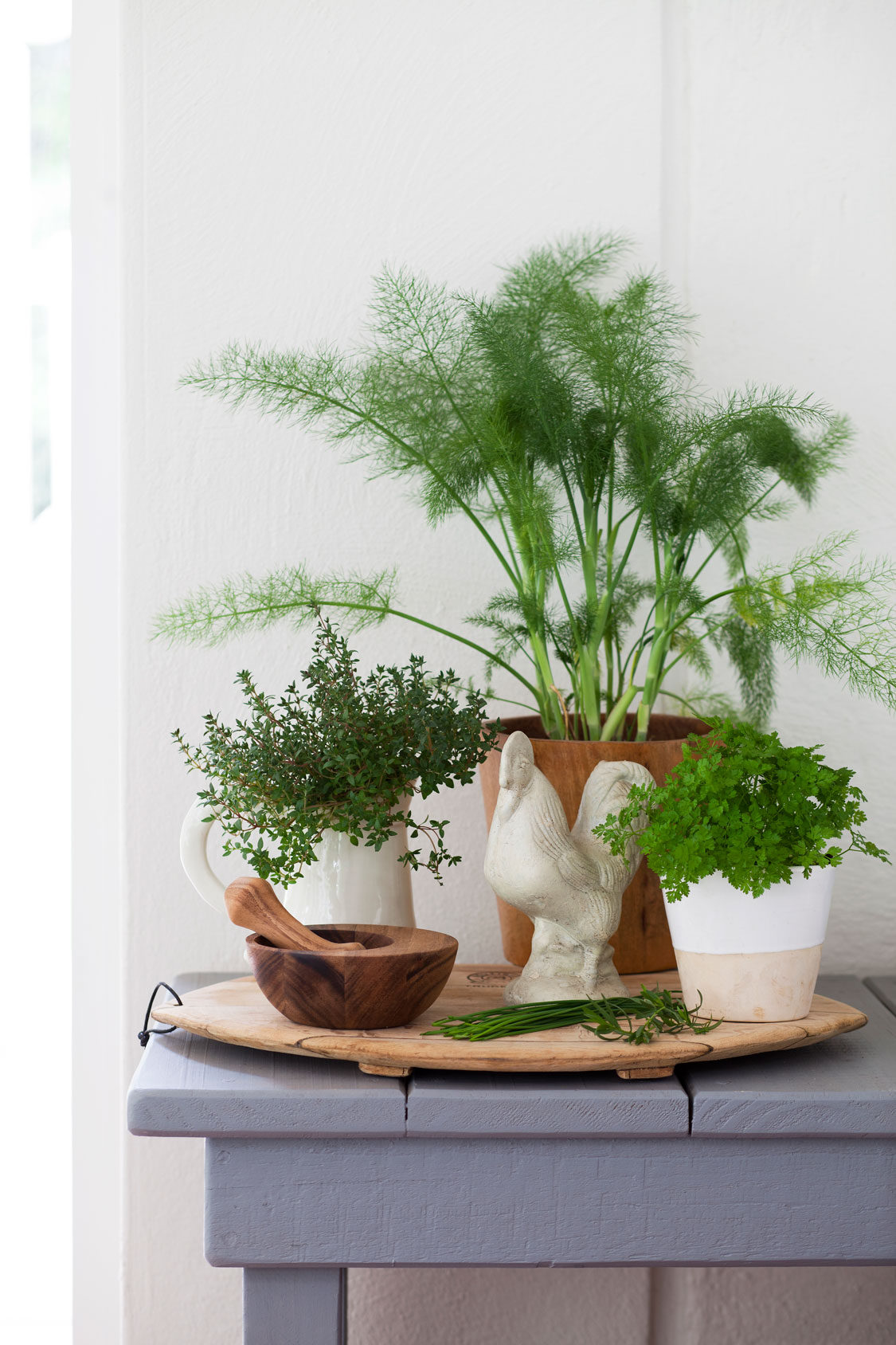These five herbs are essential ingredients in classical French cuisine. Here’s how to grow them and use them in your cooking
FRENCH TARRAGON (ARTEMISIA DRACUNCULUS VAR SATIVA)
This queen of French culinary herbs has distinctive anise-flavoured leaves. Its long, slender stems form a dense 90cm-wide and high shrub that becomes dormant in winter.
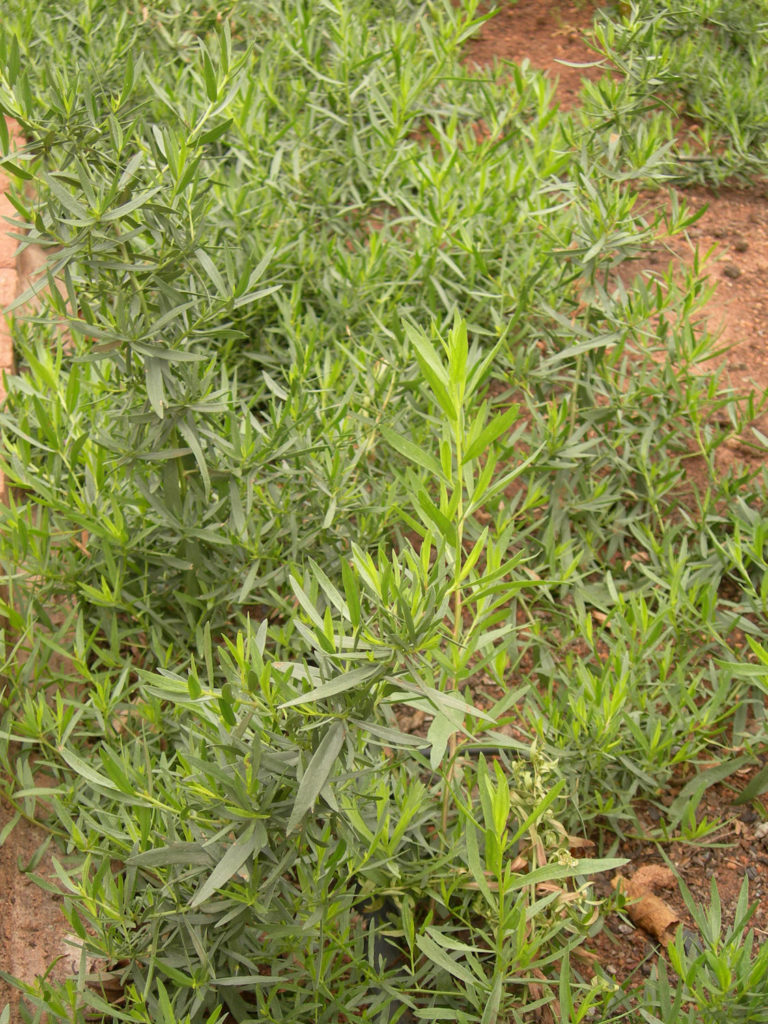
Growing guide:
- It needs a spot in full sun.
- It likes moist, not waterlogged soil.
- The aromatic foliage repels insects and enhances the growth and flavour of other crops, especially aubergines.
- Replace it every four years.
COOK’S NOTES:
- Heat brings out the flavour so use only a few leaves to add character to creamy sauces and soups.
- Use it in fines herbes (recipe below), sauce béarnaise or sauce verte (green sauce) for salmon and roast chicken with tarragon (poulet á l’estragon). Add the leaves to salads, especially tomato salads.
- You can dry or freeze the leaves.
FENNEL (FOENICULUM VULGARIS)
Fennel is a tall, graceful perennial herb with fine, feathery leaves and yellow flowers. The leaves, stems and bulbs have a slight aniseed taste and aroma.
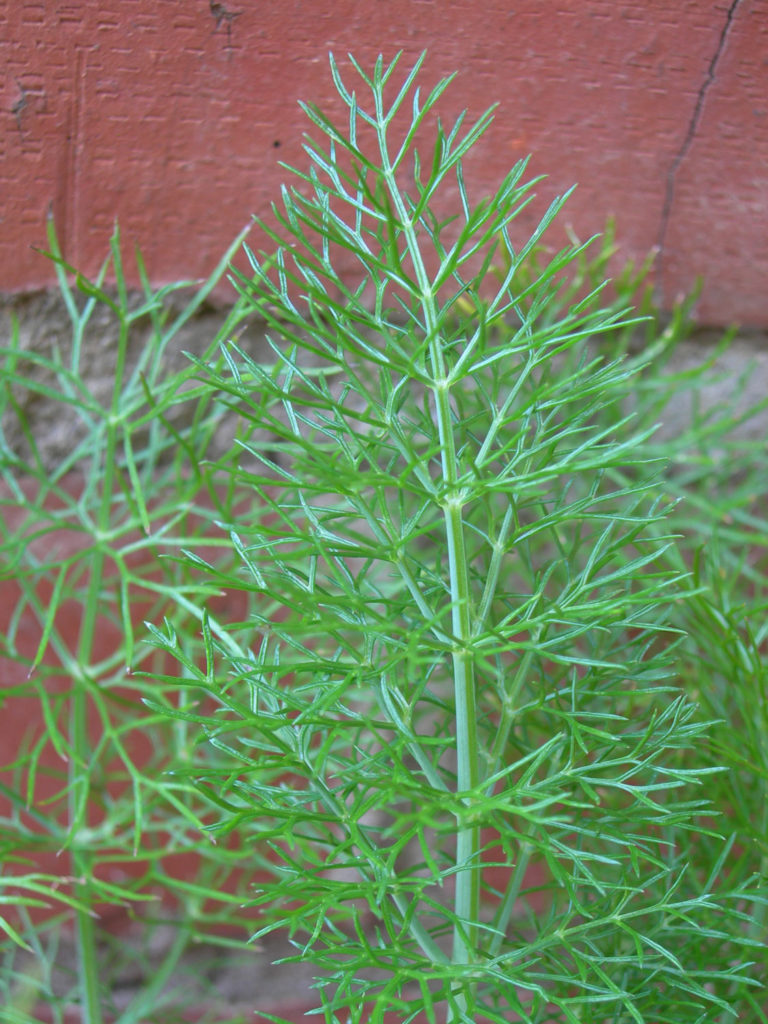
Growing guide:
- It grows in full or morning sun.
- Don’t grow it next to coriander, wormwood, bush beans, cucumber, tomatoes or caraway as it doesn’t thrive next to these plants.
- It makes an attractive addition to flowering borders.
- Water regularly during hot weather.
COOK’S NOTES:
- Use the leaves and sliced bulbs in salads, roast vegetables, in stuffings for baked fish and poultry, vinaigrettes, fish mayonnaise and for flavouring bouillon for poaching fish. Grill fish or pork on dried fennel stalks (provençal grilllade au fenouil).
- Dry the seeds for flavouring bread, cakes and biscuits.
FRENCH THYME (THYMUS VULGARIS)
This low-growing bushy perennial herb has dark green aromatic leaves and mauve flowers in summer. Use it as an edging, alongside pathways and plant it in containers.
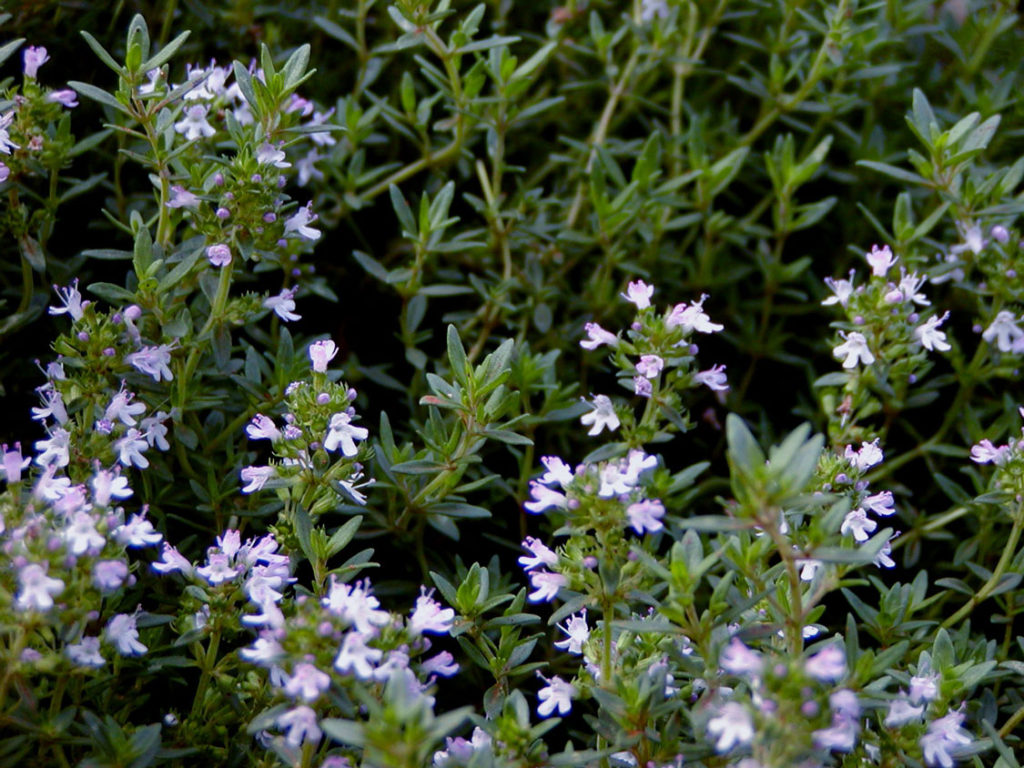
Growing guide:
- Plant it in full sun; it tolerates most kinds of soil.
- It stimulates the growth of any neighbouring plants and its aromatic leaves repel aphids.
- Don’t overwater it.
COOK’S NOTES:
- Strip the leaves from the stalks and chop finely or add whole sprigs at the beginning of cooking; remove these before serving. It works well in classic dishes like boeuf à la bourguignonne (beef and wine stew), coq au vin, and poulet sauté aux olives de provence (sautéed chicken with olives and tomatoes).
- The leaves dry well.
CHIVES (ALLIUM SCHOENOPRASUM)
Chives are grassy little perennials with mild, onion-flavoured leaves and pink or blue powder puffs of edible flowers.
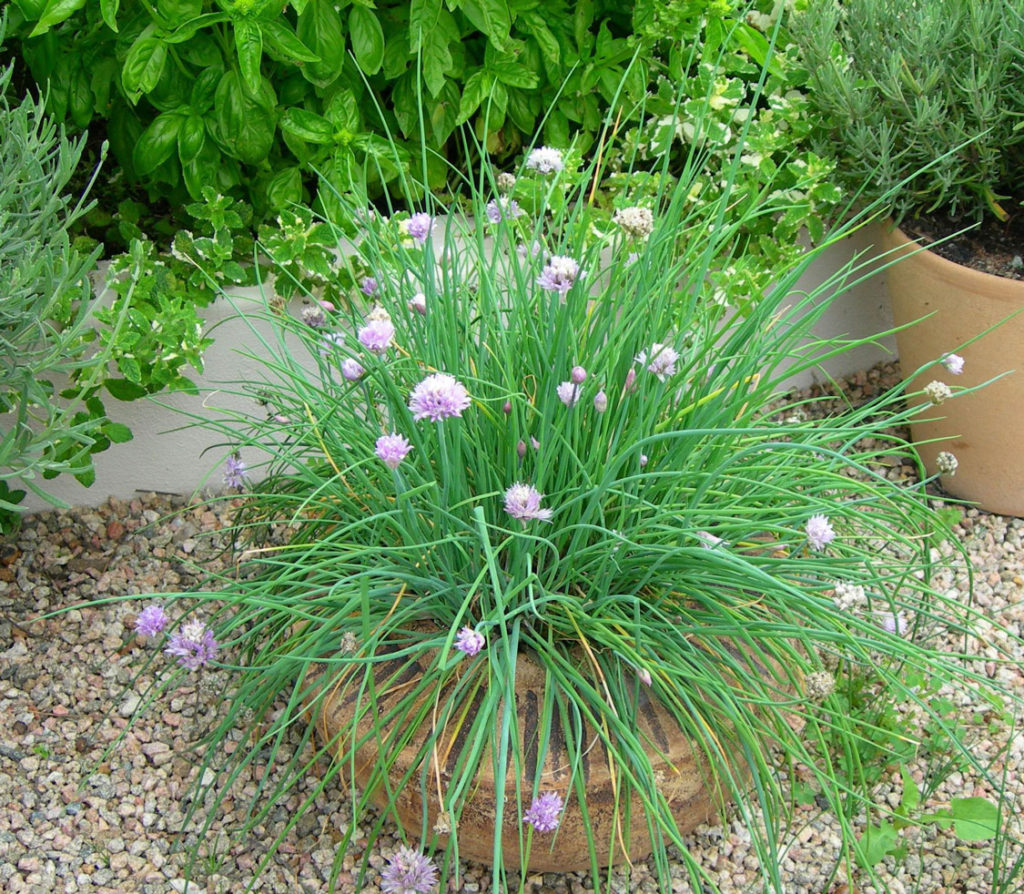
Growing guide:
- Plant it in full sun or semi-shade.
- It’s ideal for containers, but needs regular watering.
- Interplant with roses, grapes, carrots and tomatoes to keep pests away.
COOK’S NOTES:
- To harvest, cut the stems at soil level; they resprout quickly.
- Snip chives into dishes at the end of cooking and as a garnish just before serving. Combine it with cream cheese, use it in egg dishes, cheese soufflés, salads, soups, in herb butters for grilled meat and fish and with sour cream for baked potatoes.
CHERVIL (ANTHRISCUS CEREFOLIUM)
A cool season annual herb, it looks and tastes like parsley, but with a hint of aniseed. It has bright green, fern-like leaves and grows 30 – 60cm high.
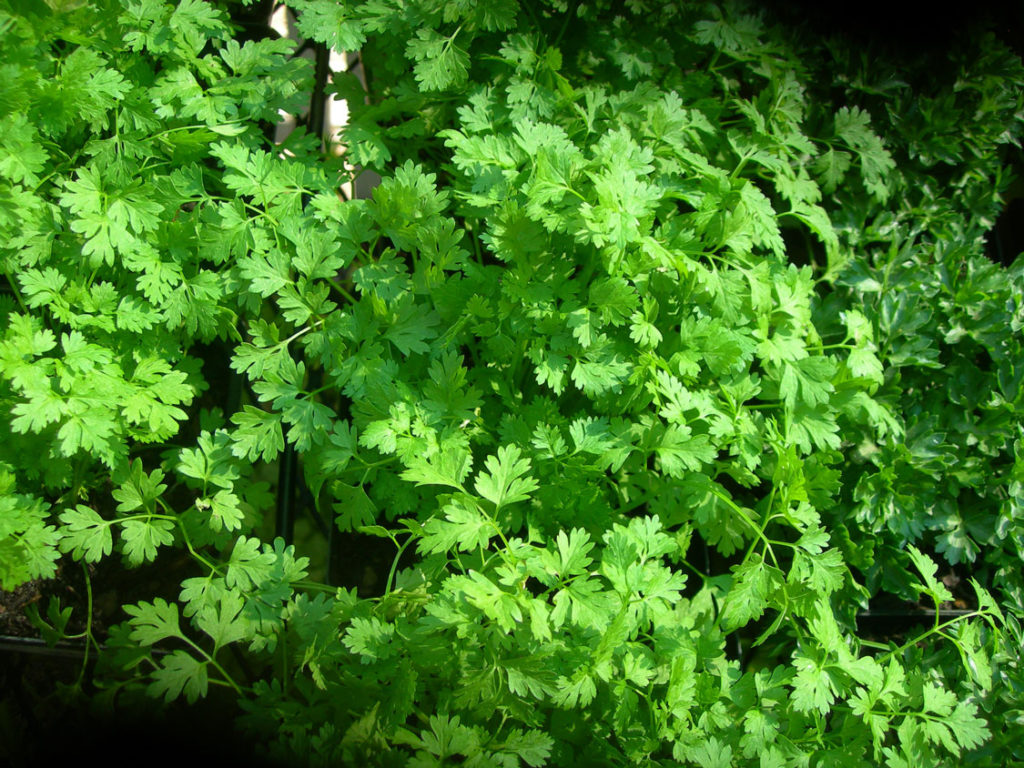
Growing guide:
- It needs light shade in summer and full sun in winter.
- It grows well in window boxes and containers.
- Sow seed every five weeks for a regular supply.
- Water frequently in hot weather.
- Harvest the leaves before the plant starts flowering.
COOK’S NOTES:
- Chervil’s flavour is lost when it’s heated, so add it at the end of cooking and as a garnish for salads, vegetables, soups, sauces and omelettes. Use it in poultry and fish dishes and to make a herb butter or infused vinegar.
- Store picked leaves in the fridge in a sealed plastic bag.
TRADITIONAL HERB COMBINATIONS
The French use herbs differently, making their own bouquets of three or more herbs for a nuanced flavour.
- Bouquet garni is a ‘broth’ posy of sprigs of parsley, thyme and bay tied together and added to soups, stews and casseroles, but removed before serving. Rosemary is a more recent addition.
- Fines herbes is a delicate blend of finely chopped tarragon, chervil, chives and parsley for velvety sauces, omelettes and butters served with grilled meat or fish. Use one tablespoon each of fresh or dried herbs.
- Herbes de provence is an aromatic dried herb seasoning for rubbing into meat, chicken and fish or as a marinade combined with olive oil. Mix three tablespoons each of dried marjoram, thyme and savory, one teaspoon each of dried basil and rosemary and half a teaspoon each of dried sage and fennel seeds. Crush them slightly and store in a sealed jar.
HERB-GROWING TIPS FROM HEALTHY LIVING HERBS
- All herbs like soil that drains well.
- Before planting, enrich the soil with compost.
- Monthly feeding with a liquid fertiliser improves leaf production.
- Regular picking encourages new growth and bushier plants.

